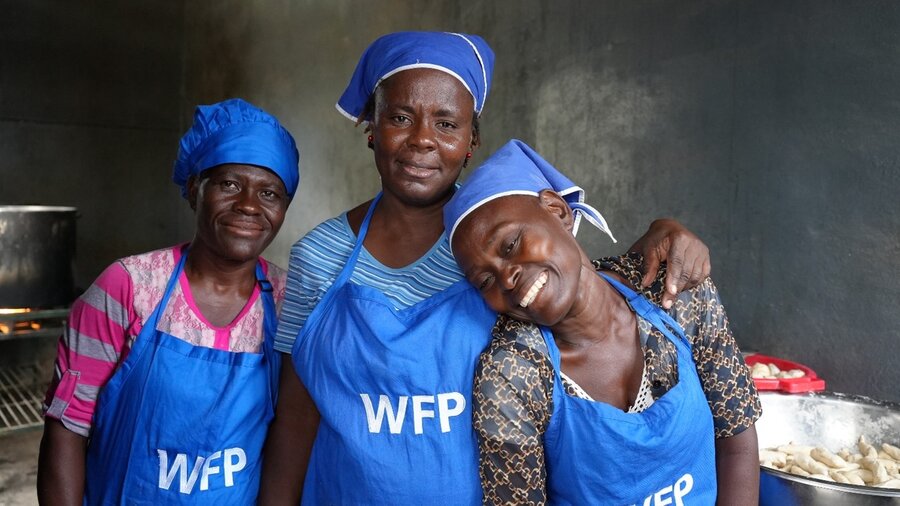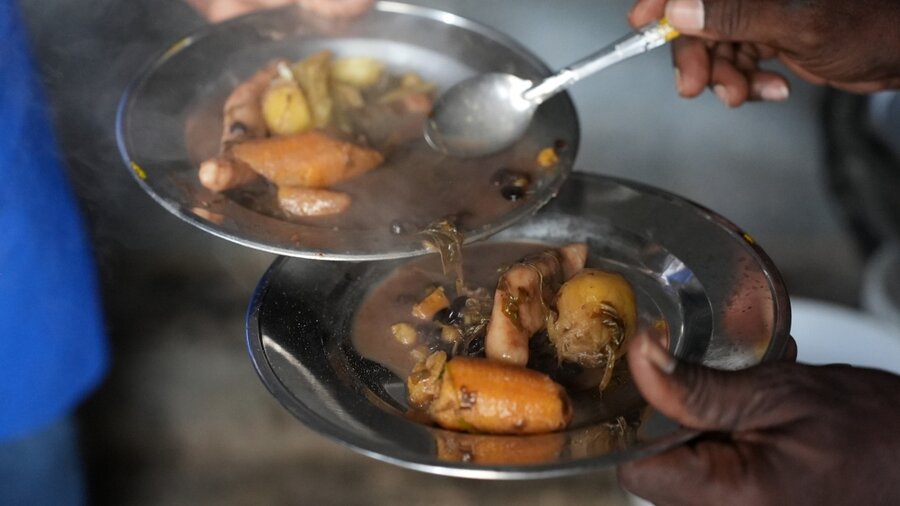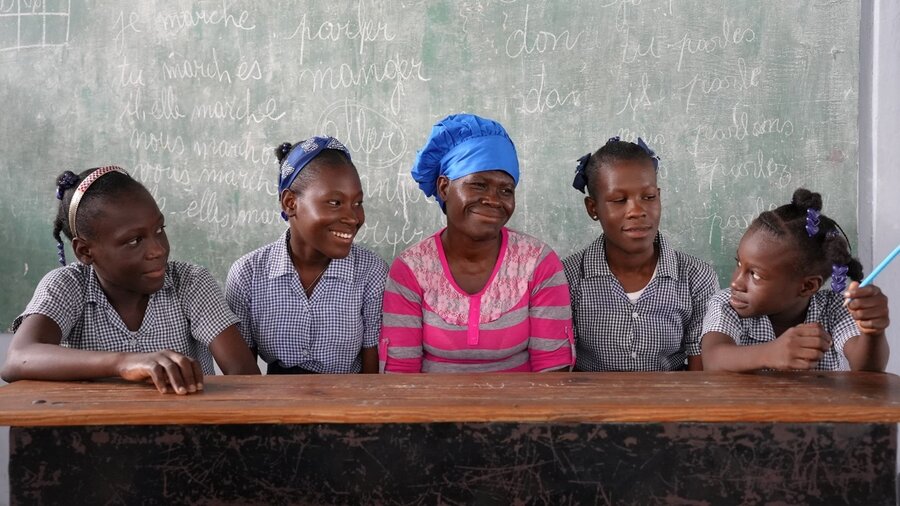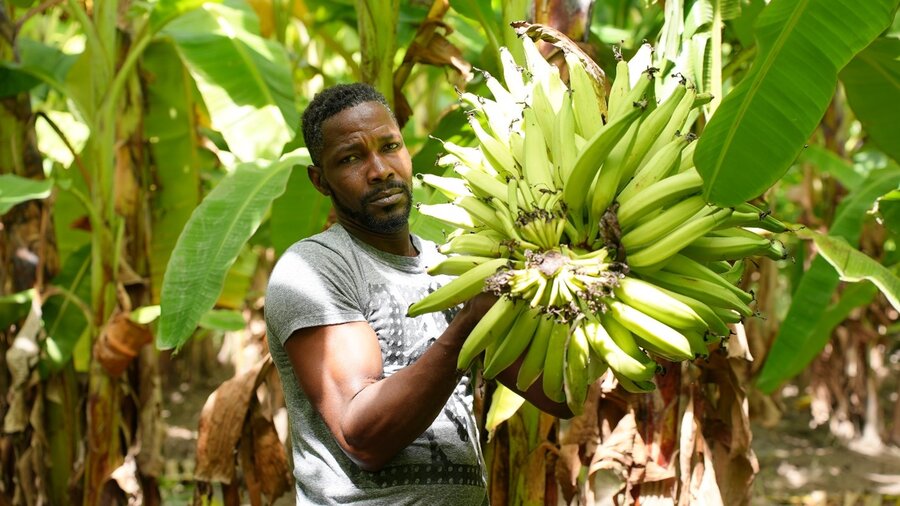Haiti: Locally sourced school meals nurture the future of students and farmers

It's 07:00 and the city of Gonaïves is already bustling with activity. In the streets, dozens of motorcycles weave between the tap-taps – traditional, decorated vans used as mini-buses in Haiti. At a school supported by the World Food Pogramme (WFP), volunteer cooks Magali, Simone and Josie cheerfully stir large pots of black bean soup, despite the blazing heat.
The preparation of school meals is a meticulous job that begins early in the morning, with the cleaning and chopping of ingredients followed by a long cooking process. By noon each day – thanks to the support of these mothers – fresh, nutritious meals are served to over 250 students.
These children are among 420,000 who receive daily meals at schools across the country, with support from WFP

Magali has four daughters studying at this school. Her husband is sick and unable to work.
When she's not volunteering at the school, Magali sells bread. “I walk the streets looking for work. But it's hard. Because of my husband's illness, I'm both mum and dad at home,” she explains.
Magali sometimes doesn't have enough money to buy food for her six children. But she is reassured, knowing they will receive at least one full meal at school. ”Thanks to the school canteen, my children come home satisfied and can finally sleep well,” she says.

Magali’s eldest daughter, Medza, is 14 years old. “I'd like to become a nurse, but there's a little problem,” says Mezda with a laugh. ”I'm afraid of blood! But you know, that's nothing! Once I am dealing with a patient, I won't even think about it, because it will be my duty to help.”
In a country where almost half the population suffers from acute hunger, school meals provided by WFP give students like Medza the nutritional boost they need to learn and to work towards their dreams. “When I come to school with nothing to eat, I know I'll go home with a full belly,” she explains.
From farm to classroom
The benefits of the programme extend far beyond the school. In close cooperation with the Haitian Ministry of Education and the National Development Bank, WFP buys food from local producers – an approach known as home-grown school feeding. This way, farmers benefit from a regular buyer and a fair price.

Iler Cambronne, a banana-plantain grower, has been working the land and looking after animals since he was very young. “This is my greatest pride,” he says of his work with WFP and local authorities. “Not only for me, but for the whole of Haiti, because it's national production at the service of the country. I feel enormous satisfaction when I realize that it's my plantains that the children eat at school,” he says.

Iler employs ten people and can provide schools with up to 50 bunches of plantains every week, each containing 12 plantains.
Home-grown school feeding is strengthening rural economies in Haiti, where the flow of food from farmers to markets is often disrupted by gang violence and insecurity. Through local food purchases for nearby school meals, WFP injects over US$1 million into the national economy every month. This also helps break the country’s dependence on imported food.
With food security and sovereignty high on the Government's agenda, this model has been praised as ”exemplary” by the Haitian Minister of Education, Nesmy Manigat. ”Not only does home-grown school feeding rely on local production, but the methodology it uses to mobilize community inspires everyone,” the Minister has said.
Last year, WFP doubled the number of children receiving school meals prepared with local ingredients, to reach more 180,000 learners across Haiti. By 2030, the aim is that 100 percent of school meals are prepared with locally grown and processed foods, benefiting students like Medza, local producers like Iler and the whole nation.
Home-grown school meals in Haiti are possible thanks to the generous support of the Church of Jesus Christ of Latter-day Saints.
